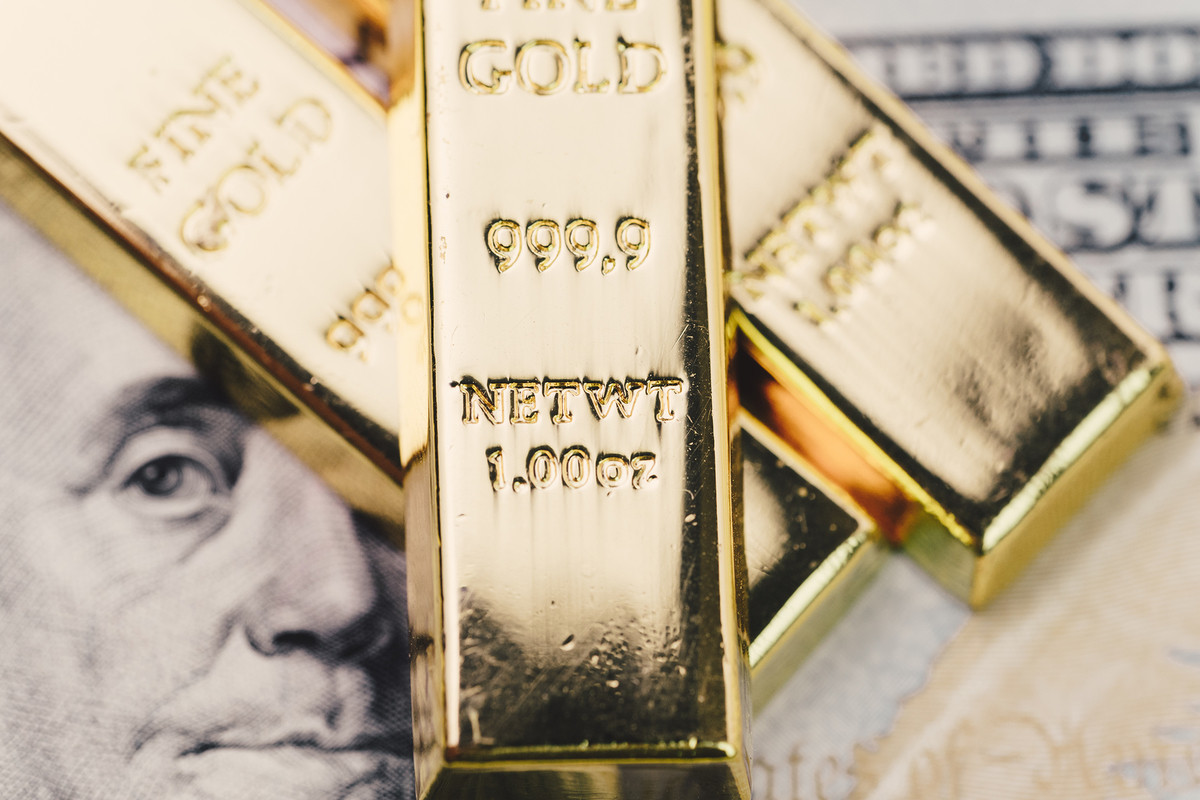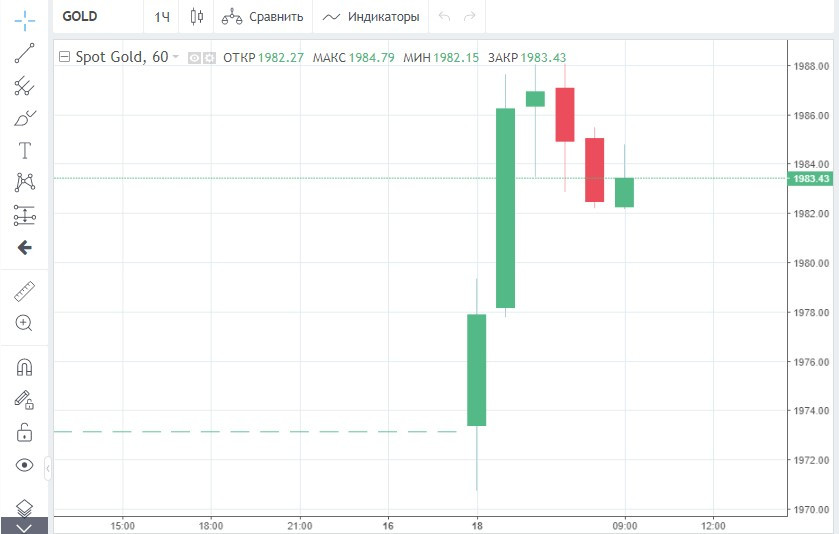
Gold prices have surged upwards and have tested the key level of $2,000 per ounce amid the escalation in Ukraine.
On Thursday, the precious metal came under pressure from rising US dollar and lost 0.5% before the Easter holidays.
Hawkish sentiments boosted USD following last week's US inflation data. Annual inflation in the United States has jumped to 8.5%, which would likely force the Fed to hike the rates by 50 basis points in May.
Optimism over Fed monetary tightening has continued to give support to the US currency this week. The US dollar index traded above 100 points on Monday.
In the meantime, the yield of 10-year US Treasury bonds has jumped to 2.859%.
Rising US dollar and Treasury yields have prevented gold from settling above the key psychological level of $2,000.
The precious metal tested this area amid escalation in Eastern Ukraine earlier this week.
Russian forces were aiming to break through Ukrainian defenses across the entire front line in Donetsk, Luhansk, and Kharkiv regions, reports said early on Monday.
The situation in Mariupol remains tense and unclear. Moscow claims the city is almost fully under Russian control, and that its Ukrainian defenders have refused to lay down their weapons and surrender.
Investors have shifted away from risky assets due to the news from Ukraine. As a result, US stock indexes closed in negative territory yesterday.
Thanks to increased demand for gold as a defensive asset, the precious metal closed in positive territory on Monday, despite failing to settle above $2,000.
June gold futures increased by 0.6% or $11.50, hitting a new monthly high of $1,986.40 per ounce at the end of the session.

Other precious metals also advanced on Monday, with silver rising by 1.8% to $26.15 per ounce, platinum increasing by 2.7% to $1,020.50 per ounce, and palladium jumping by 3.8% to $2,445.10 per ounce.
Recent statements and outlooks by the IMF, the World Bank, and the Goldman Sachs gave additional support to gold.
IMF Managing Director Kristalina Georgieva noted that the war in Ukraine "is sending shock waves throughout the globe", which could threaten global economic recovery.
On Monday, The World Bank lowered its annual global growth forecast for 2022 to 3.2%, down from 4.1% projected earlier, citing the impact of the war.
"Many countries are now facing record levels of external and domestic debt as interest rate hikes begin. Around 60% of low-income countries are already at high risk or already in debt distress, and many emerging markets are struggling as well," the World Bank's president David Malpass said.
According to yesterday's outlook by The Goldman Sachs, the investment bank sees the odds of recession in the US in the next 2 years at 35% due to the international situation.
As reputable financial institutions raise alarm over a deep economic crisis, investors rush to acquire both gold futures and physical gold.
Demand for the precious metal as a safe haven asset continues to rise due to the risk of recession caused by the war in Ukraine. The conflict continues to sow inflationary fears in the market and has no sign of stopping anytime soon.
 English
English 
 Русский
Русский Bahasa Indonesia
Bahasa Indonesia Bahasa Malay
Bahasa Malay ไทย
ไทย Español
Español Deutsch
Deutsch Български
Български Français
Français Tiếng Việt
Tiếng Việt 中文
中文 বাংলা
বাংলা हिन्दी
हिन्दी Čeština
Čeština Українська
Українська Română
Română

